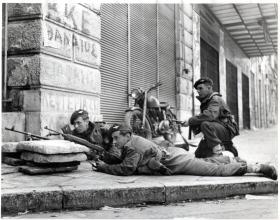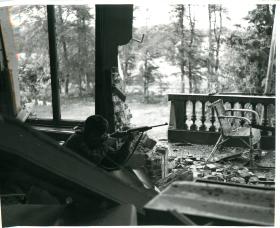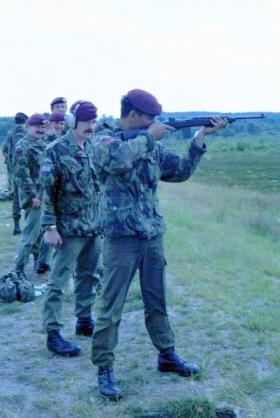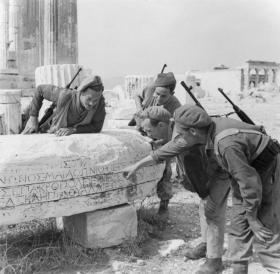The M1 Carbine was a lightweight rifle developed and produced by the United States and used in limited numbers by British airborne forces during the Second World War.
It fired a .30 calibre round (7.62 x 33mm) and was semi automatic, with a 15 round magazine.
It was designed as a compact weapon to equip support troops where the full M1 Garand rifle was not deemed suitable.
The carbine had a protracted development over a number of years, with Ed Browning and David Marshall Williams working on the design until the Winchester Rifle Company engineers refined it to US Army specifications in Oct 1941.
The carbine was cheaper to produce than the standard M1 Garand rifle and Thompson sub machine gun at only $45 (Approx $740 in modern terms against $85 for the Garland and $225 for the Thompson). In total over 6 million were produced.
The carbine was utilised by some units in British airborne forces, notably the SAS/SBS and elements of 2nd Independent Parachute Brigade in the Mediterranean theatre of operations. It was also utilised by ‘Chindit’ units in the Far East.
In both cases close co-operation and shared logistics with US forces saw the introduction of many US weapons over their British counterparts. Photo evidence also shows one in the hands of Glider Pilot at Arnhem, but standard issue to a pilot was a STEN machine carbine so it is not known how he acquired the weapon.
The carbine proved popular in use with airborne forces as it was light, compact and had a relatively high rate of fire, and with a combat range of 300 yards (270m).
Statistics:
Weight: 5.2 pounds (2.4 kg)
Length: 35.6 inches (900mm)
Calibre: .30 (7.72 x 33 MM)
Rate of fire: 750 rpm
Effective range: 300 yards (270m)
Muzzle velocity: 1990 feet per second (607m/s)
Feed system: 15 round box magazine









Latest Comments
There are currently no comments for this content.
Add Comment
In order to add comments you must be registered with ParaData.
If you are currently a ParaData member please login.
If you are not currently a ParaData member but wish to get involved please register.